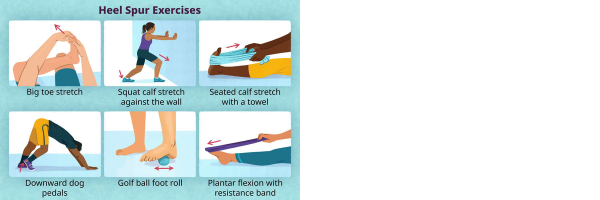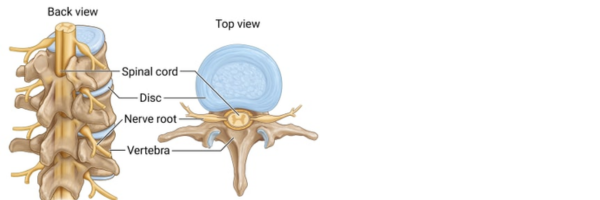
Expert-Approved Tips to Strengthen Your Bones, Protect Your Joints, and Embrace an Active Lifestyle in 2024
As we welcome a new year, it's a great time to set fresh goals for our health and well-being. Your orthopedic health is a key part of this journey. With insights from our expert practitioners, we've gathered practical tips to keep your bones, joints, and muscles strong and resilient in 2024 and beyond.
1. Prioritize Proper Footwear

Tyler Anderson, PA-C at OrthoCarolina Foot & Ankle, highlights the importance of choosing the right shoes, especially as we move into colder months. Many of us switch from sandals to closed-toed shoes in winter, but poor footwear can cause foot issues like bunions, hammertoes, or plantar fasciitis.
Your foot is a complex structure with 26 bones, 33 joints, and over 100 muscles, tendons, and ligaments working together for support, balance, and mobility. The arch of the foot is crucial for weight distribution and shock absorption. Wearing shoes with proper support helps maintain balance and prevents strain on areas like the plantar fascia—a thick band of tissue connecting the heel to the toes.
Tyler’s Advice:
- Choose wisely: Shoes with a wide toe box and soft materials can prevent rubbing and worsening conditions like bunions.
- Support matters: If you have plantar fasciitis, choose shoes with good arch support. Brands like Brooks, Asics, New Balance, and Hoka are often recommended, but every foot is different. Spend time trying on and walking in new shoes to find the best fit.
- Style vs. comfort: The most fashionable shoe isn’t always the healthiest choice for your feet. Prioritize comfort and support over trends.
2. Help Kids Stay Active Safely
Esther Gelbard, PA-C in Pediatrics, emphasizes the importance of stretching exercises for growing children to prevent overuse injuries.

In children, growth plates—areas of developing cartilage tissue near the ends of long bones—are crucial for bone development but are also vulnerable to stress. The calcaneal apophysis (heel growth plate) is where the Achilles tendon attaches to the heel. Rapid growth can cause tightness in surrounding soft tissues, leading to conditions.
Key Recommendations:
- Daily heel cord stretches: These exercises reduce tension on the heel growth plate (calcaneal apophysis) and help prevent injuries.
- Stretch to support growth: Incorporating Achilles tendon stretches into your child’s routine can decrease the risk of overuse injuries during periods of rapid growth.
- Stay consistent: Regular stretching ensures growing children can enjoy sports and activities without unnecessary time off due to injuries.
3. Protect Your Spine

Georgia Tanner, PA-C from Winston-Salem Spine, stresses the harmful effects of nicotine and excess weight on spinal health.
The spine consists of 33 vertebrae stacked in a column, separated by intervertebral discs that act as shock absorbers. These discs and the surrounding muscles, ligaments, and blood vessels need proper oxygen and nutrients to function well. Nicotine reduces blood flow, speeding up disc degeneration. Excess weight adds pressure on the spine, worsening wear and tear.
What You Can Do:
- Eliminate nicotine: Products like cigarettes, vapes, and chewing tobacco restrict blood flow, speeding up disc degeneration and delaying healing. Start small by reducing nicotine consumption—every little bit helps.
- Maintain a healthy weight: Extra pounds can add significant stress to your spine, contributing to back pain and disc wear. Combine a balanced diet with regular exercise to shed excess weight and keep your spine in optimal condition.
4. Prevent Shoulder Pain
Shoulder impingement syndrome, a common cause of discomfort, can often be avoided with proper care. Kaitlyn Joyner, PA-C, CAQ-OS, ATC, from Sports Medicine, shares her tips.
The shoulder joint is a ball-and-socket joint where the humeral head (ball) fits into the glenoid cavity (socket). The rotator cuff—a group of four muscles and their tendons—stabilizes the joint, while the acromion (part of the shoulder blade) can sometimes compress the tendons during movement, causing impingement. Strengthening and stretching these muscles can reduce the risk of irritation and inflammation.
Kaitlyn’s Tips:
- Strengthen and stretch: Focus on exercises for the rotator cuff and muscles that retract the shoulder blades.
- Warm-up and cool down: Prepare your body before physical activity and allow it to recover afterward to reduce the risk of injury.
- Pay attention to form: Repetitive overhead activity can strain your shoulders. Practice proper mechanics and avoid overloading the joint.

5. Care for Your Hands
Healthy hands are essential for daily activities, from typing to cooking, yet they are often overlooked. Our hands are made up of 27 bones, numerous joints, and a network of muscles, tendons, and ligaments that enable fine motor skills and strength. To prevent common issues like tendonitis or carpal tunnel syndrome, it’s important to practice proper hand ergonomics and exercises. Dana Cumberworth, PA-C, provides valuable insights on maintaining hand health.

Helpful Tips:
- Stretch regularly: Incorporate hand and wrist stretches, especially if your work involves repetitive motions. Stretch those forearms and ensure you have a good ergonomic workspace to set yourself up for success in 2025.
- Practice good posture: Keep your wrists in a neutral position when typing or using tools to reduce strain on tendons and nerves. The position of your wrists can significantly impact long-term hand health. Keeping wrists relaxed and neutral can reduce the risk of overuse and carpal tunnel syndrome.
- Understand nerve health: Think of the nerves in your upper body like a “garden hose” that waters plants. If the hose gets kinked, water stops flowing. Similarly, bending or extending wrists too much disrupts the flow of electricity from your spine to your fingertips, causing numbness and pain.
- Strengthen your grip: Use a stress ball or hand grippers to improve hand strength and reduce the risk of injuries.
New Year, Healthier You
This New Year, let's resolve to care for our bodies with the same determination we bring to our other goals. By following these orthopedic tips from our practitioners, you can reduce pain, prevent injuries, and maintain an active lifestyle throughout 2024. Cheers to healthier bones and joints—from all of us at OrthoCarolina!
Comments
January 16, 2025
Back




January 16, 2025